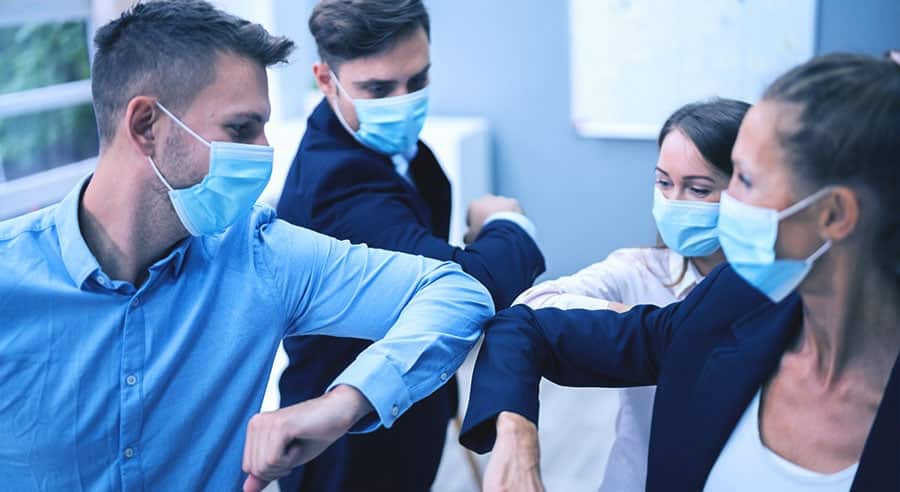Reduce sick leave - increase productivity

The problem: Heating systems commonly used in production halls or warehouses blow warm air into the work areas. This not only stirs up dust and disperses aerosols, but also creates an unpleasant working atmosphere. It is not uncommon for sauna conditions to prevail in the immediate vicinity of the blowers and it can often be observed that people work in T-shirts under these conditions, even if the temperature outside is below zero. But no one puts on a jacket when the gate is open or when a quick walk across the yard is required.
One of Europe's leading manufacturers of precision chains in North Rhine-Westphalia regularly struggled with this problem in winter. The solution emerged as a side effect after the decision had actually been made to install a new, energy-saving hall heating system for economic reasons. This not only reduced the previously enormously high energy costs, but also significantly optimized heating comfort. This is because the infrared technology used ensures a pleasant, uniform and draught-free working climate in the hall buildings. In addition, the temperature can be precisely controlled, for example to a working temperature of 18 °C in the production area. Employees in production now work in seasonally appropriate clothing and absenteeism due to illness has fallen measurably.
If you would like to find out more about reducing sick leave and these heating solutions, please contact Contact us on.
By the way: The next Hot tip around the topic Hall building & energy efficiency we'll tell you next time.
-
"No energy transition without energy efficiency" is the title of dena's "Topics and projects" section on its homepage "The best kilowatt hour is the one saved," says Thomas Kübler, Managing Partner of KÜBLER GmbH. Both mean the same thing: It's about curbing energy consumption in general and especially in companies. Because this is an enormous lever for achieving climate targets. And that's not all: energy efficiency also pays off economically if it is approached in the right technological way. Modern infrared heating technology plays an important role here, especially when it is intelligently combined with Bennwert technology.
-
New gas heating quickly in 2023 - often the cheapest decision that also pays off for the environmentThe BMWK is currently causing a stir with a draft bill. This is because it involves a categorical ban on gas heating systems. According to the plan, from 2024, only heating systems powered by 65 % renewable energies may be used. Formally, this can only be heat pumps, district heating or biomass heating. This raises the question: what about the openness of technology in Germany? And who should pay for it? Decentralized gas-powered heating systems are often the only economically and functionally viable solutions, especially in hall buildings.
-
Save energy costs and protect the environment: Dark radiant heaters are among the most efficient heating systems for halls that you can buy. But which infrared system is right for you? We give you an overview.
-
Infrared hall heating in your production: How to create the right indoor climate for your productionIndoor buildings are a world of their own. Especially in winter. The high rooms pose a real challenge for anyone who wants to ensure the most pleasant working climate possible. But there are solutions - infrared hall heating, for example.





